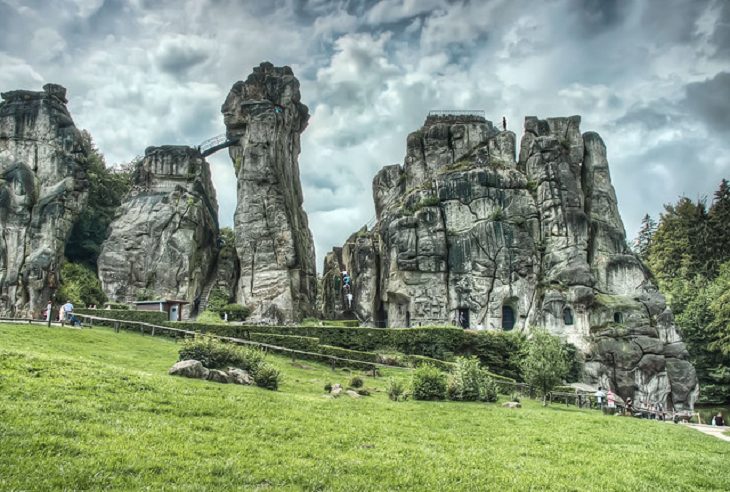
There are some questions that may never be answered. Even today, archaeologists and other researchers are unable to solve the mysteries left behind by some previous people. Indeed, here are 22 mysterious monuments from ancient civilizations.
The Pyramids of Giza
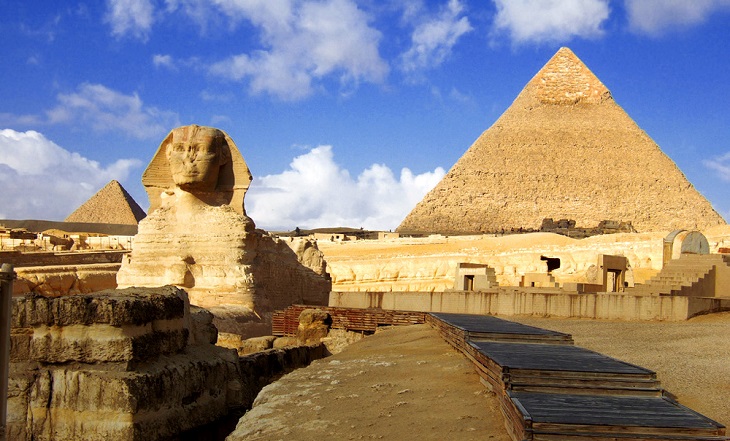
Located in Cairo, Egyptologists still can only speculate about this 4,500-year-old burial complex. How could ancient architects assemble these specific structures as high as 149 meters (459 feet)? How could millions of stone blocks weighing several tons even be moved several kilometers in the first place? How the builders could be so precise with such rudimentary tools remains a mystery to this day.
Pyramids
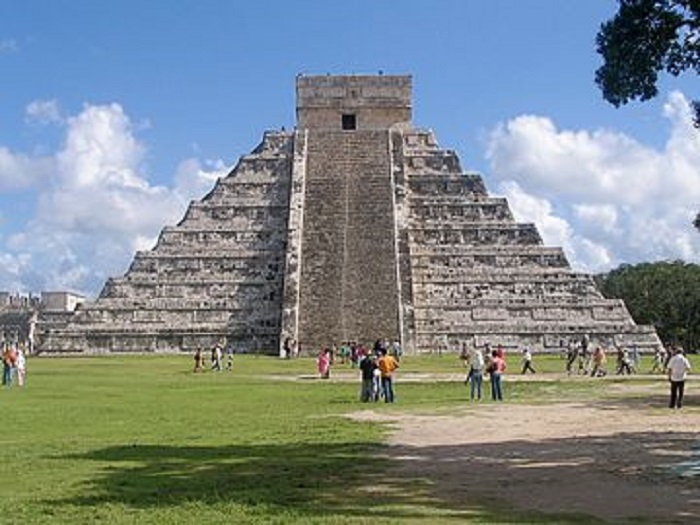
The ancient Egyptians built pyramids. But how did pyramids come to be built in both Mexico and Japan as well? How did people with such limited resources erect such impressive structures?Was there once an internationally-known architectural method about which we now know nothing? Many theories have been posed and not all are scientific. Could they be the product of alien activity or a peculiar paranormal phenomenon?
Teotihuacan
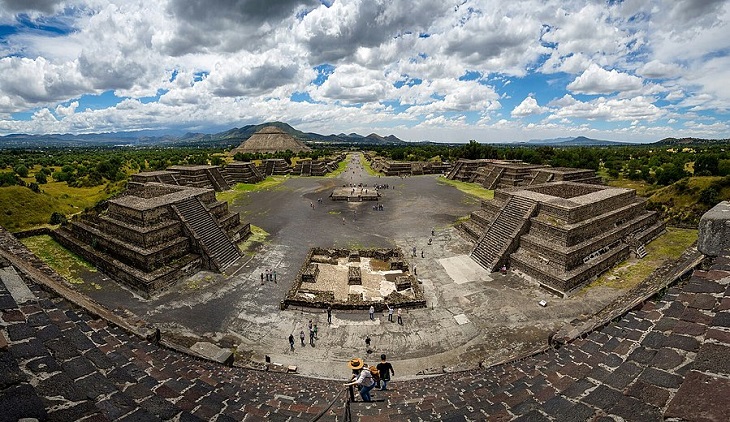
Teotihuacan is just northeast of Mexico City. Historians remain uncertain as to who built this 9.7-square-mile (25-square-kilometer) site. Scientists proved it the Aztecs did not construct this 2,000-year-old location.They only “inherited” it. Additionally, Hugh Harleston, an American engineer, discovered that Teotihuacan is actually a model of our own solar system. The various buildings proportionally correspond to the size and position of the planets.
Tiwanaku
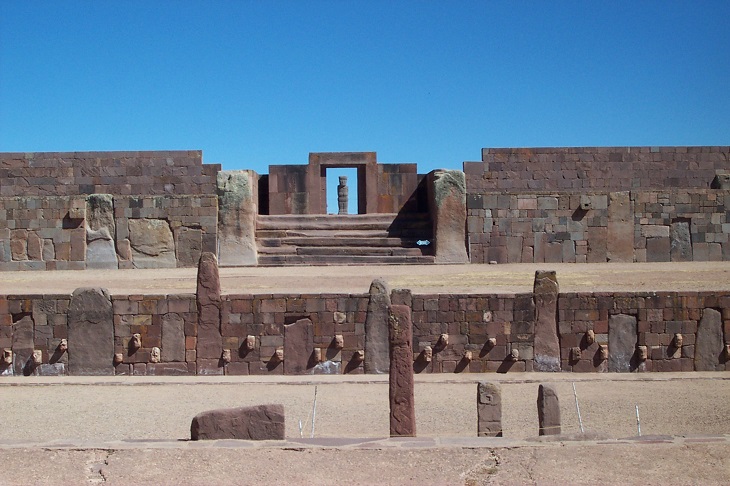
Located on a high-altitude plain in Bolivia, this pre-Columbian city is over 1,000 years old. Some believe it to be between 4,000 and 12,000 years old. Regardless of its age, researchers agree that it could be one of the world’s oldest cities. The impressive details of the stonework indicate that this was once the home of people who were ahead of their time.
Tiermes

Found in Spain’s Castile-León region, Tiermes is nearly entirely carved in the rock there. The ruins include city gates, a forum, homes, and an impressive aqueduct system. Researchers do not yet know for sure who built this city or even when. They do know that the Romans aided in the city’s economic development and that the Celtiberians, the Visigoths, and the Moors all passed through here.
Petra

Although this city was erected in the fourth century BC, this once important trading center in Jordan was forgotten before the eighth century AD. In 1812, it was rediscovered and deemed a UNESCO World Heritage site. Researchers still have questions. How were the inhabitants able to carve the entire town from the rock? How were they even able to have enough water in one of the world’s most arid areas?
Great Zimbabwe
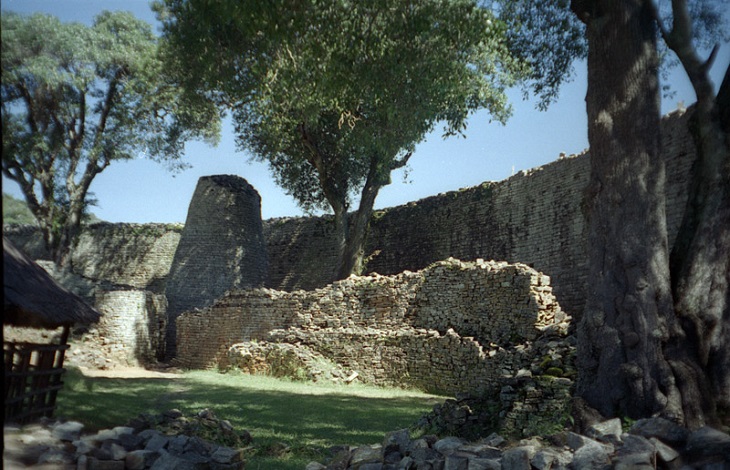
Ensconced in the hills of southeastern Zimbabwe, this 2.7 square-mile (7 square-kilometer) ancient trade center was built by the Shona people sometime between the 11th and 15th centuries. In 1871 it was rediscovered by a group of European explorers. Some researchers theorize this was once the location of the biblical, gold-rich King Solomon’s Mines. Unfortunately, this theory quickly led to the ruins being pillaged.
Temples of Malta
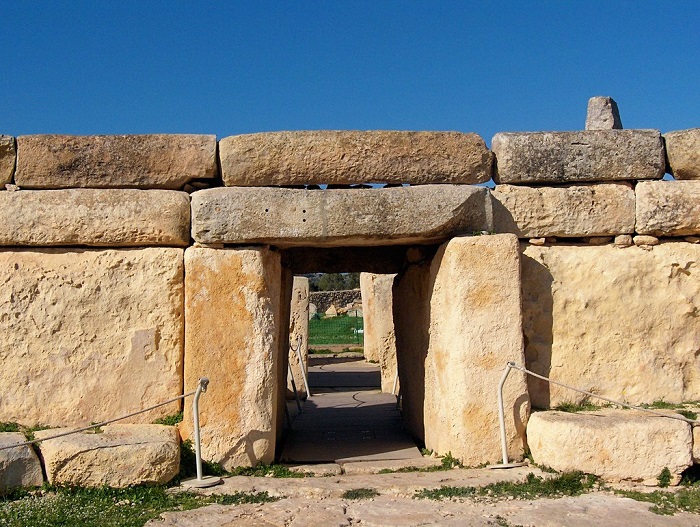
Found in the famous Maltese archipelago, the megalithic temples of Malta are a treasure. The islands of Gozo and Malta include some of the planet’s oldest prehistoric architectural structures. These temples date back to somewhere between 4000 and 2500 BC. They are not only significantly elaborate in their design but are reportedly “advanced technical achievements” for that time period. They are included on the official UNESCO World Heritage list.
Newgrange
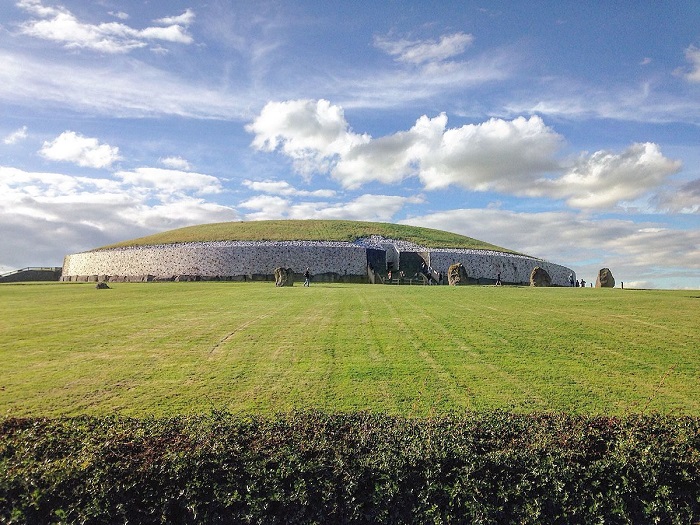
Situated north of Dublin, Ireland, the imposing Newgrange passage tomb is over 5,000 years old. It has a diameter of 2890 feet (85 meters). If you’re there close to the winter solstice, visit before sunrise. Watch as the sunlight passes through the opening on the mound and moves up the lengthy passage into the burial chamber. Witness the perfect alignment of the sunrise and the monument.
Stonehenge
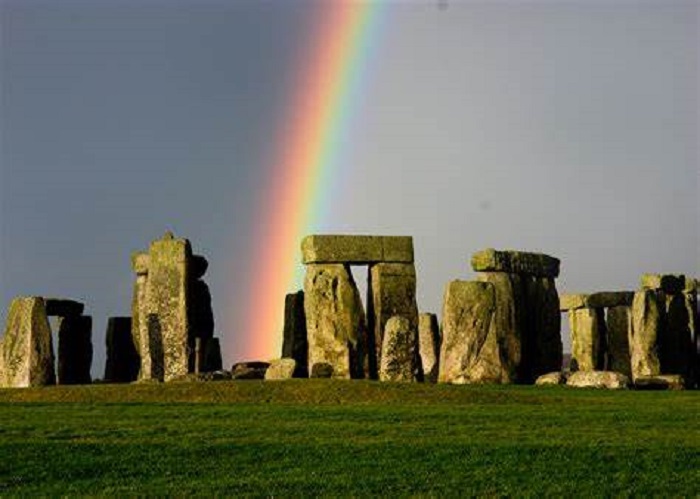
The prehistoric rocks of Stonehenge, England, are world-famous. Some sources estimate that this place was actually used between 3700 and 1600 BC. Declared an official UNESCO World Heritage site in 1986, this architecturally sophisticated circle of stones remains a mystery. No one fully understands the significance of the location. Still, the mysterious monument reveals evidence of both Bronze and Neolithic Age mortuary and ceremonial practices.
The Stone Circles of Avebury
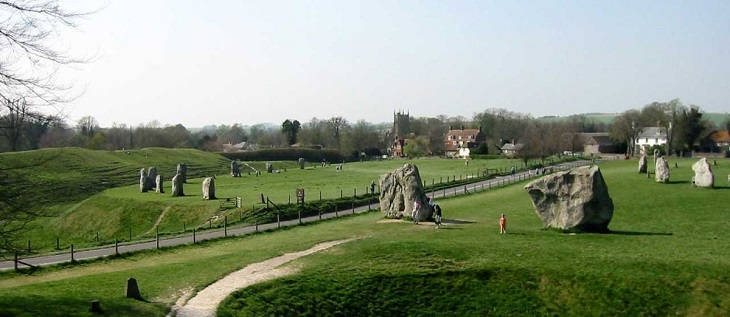
The famous Neolithic stone circles of Avebury in southwest England can be found 18.5 miles (nearly 30 kilometers) north of the famous Stonehenge in Wiltshire. They are reported to be the world’s largest prehistoric stone circles and important to contemporary pagans. UNESCO states that this huge henge indicates “the outstanding engineering skills which were used to create masterpieces of earthen and megalithic architecture.”
Silbury Hill
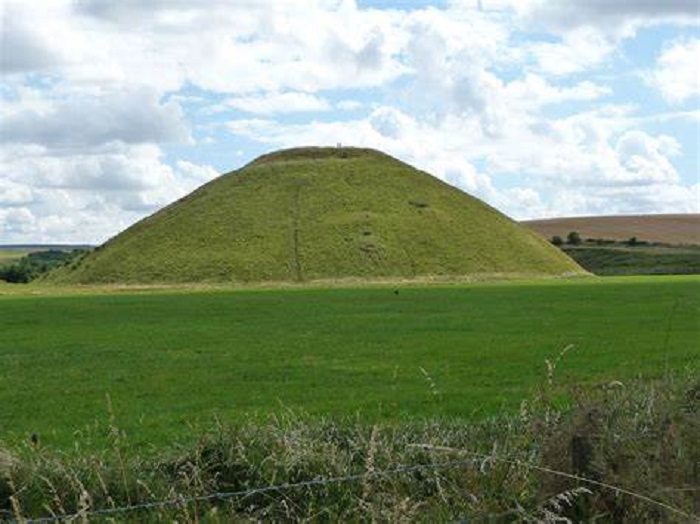
Not far from the above-mentioned stone circles of Avebury, is Silbury Hill. At 131 feet (40 meters) high, Silbury Hill is Europe’s largest prehistoric mound. While the actual purpose of the mound is still unclear, it was built roughly between 2400 and 2300 BC. They built it in 15 distinct phases. Archaeologists think the builders were focused not on the final shape but instead on their ritual of construction.
Glastonbury Tor
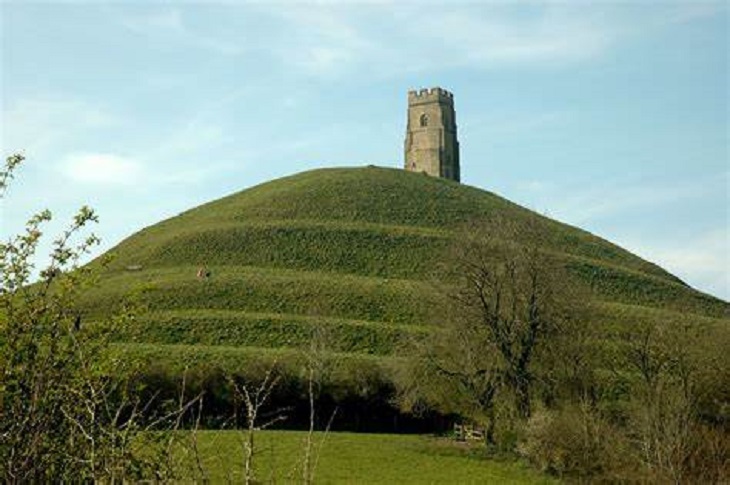
The Tor overlooks Glastonbury, in England. It is essentially a conical hill that is topped by an ancient roofless tower. The tower’s actually the vestige of a church from the 1300s erected on the actual ruins of a previous church. Some historians believe this may have been the myth-enshrouded Avalon where King Arthur’s sword, the fabled Excalibur, was forged. Archaeologists know this site was inhabited long before the historic Middle Ages.
The Carnac Stones
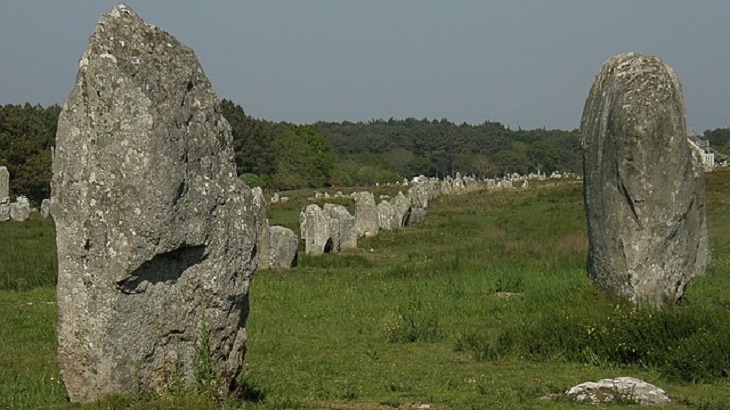
Located in Brittany, France, the mysterious exceptionally dense Carnac stones are almost 6,000 years old. More specifically, this monument consists of over 3,000 prehistoric stones that were carved from local granite and stood up by pre-Celtic residents. Most are in Carnac, but others are technically in La Trinité-sur-Mer. Why would thousands of stones have been lined up in descending size across 2,6 miles (almost 4 kilometers)?
The Externsteine of the Teutoburg Forest

The famous Teutoburg Forest is found in Germany. It is here that one can discover an important part of old Germanic history. Here you can see the Externsteine which is a group of standing sandstone pillars formed many years ago. Some researchers think this place was a solar observatory and others believe it to be a pagan place of worship.
The Giants of Easter Island
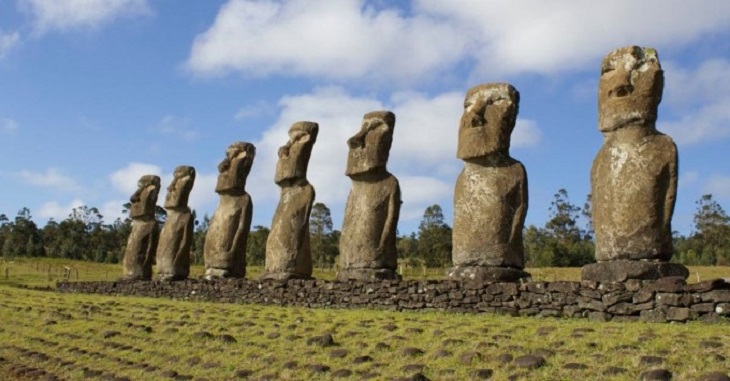
These mysterious monuments are found on a remote island off the beautiful coast of Chile. The residents of Easter Island created the huge stone figures and ceremonial platforms between the 10th and the 16th century. The massive busts are known as moai. UNESCO notes that there are about 900. To this day, researchers wonder about their significance, how they were created and how they were moved.
Uluru

The sandstone monolith is in Australia. It is 22,000 years old and overlooks a rugged plain. This 1,148-foot (350-meter) rock is said by veteran visitors to be exceptionally beautiful at sunset when it suddenly has a crimson glow. The Indigenous population considers the rock to be sacred and thus visitors are asked to not climb on it.
Mount Tai

According to UNESCO Mount Tai “was the object of an imperial cult for nearly 2,000 years” and “symbolizes ancient Chinese civilizations and beliefs.” Perhaps this is why it is one of the five mountains China deems to be sacred. The mountain’s ecosystem remains well-balanced despite the fact that millions of visitors climb 4,921 feet (1,500 meters) annually to reach the summit.
Notre-Dame de Paris

The world-renowned medieval Catholic Notre-Dame de Paris cathedral in France has an air of mystery to it that has been a source of inspiration for animation, novels, songs and more. It recently celebrated its 850th anniversary and even weathered a major fire. Some historians still wonder about the symbolism of the numerous carved stone sculptures along its famous façade.
Mausoleum of the Qin Emperor

It was here near the city of Xi’an, China in 1974 when the famous army of terra-cotta warriors was discovered. They date back to 210 BC when they were created to protect Emperor Qin Shi Huang Di, in the afterlife. Now a UNESCO World Heritage site, this tomb makes one wonder if each terra-cotta warrior actually represents a real soldier.
The Anasazi Cliff Dwellings

In the southwestern US between the first century BC and 15th century AD, the Native American Anasazi constructed their dwellings in the sides of cliffs. Archaeologists find the precarious location intriguing and remain uncertain as to why the ancient Anasazi suddenly abandoned their homes. Was it a drought, environmental degradation, or some other danger?








